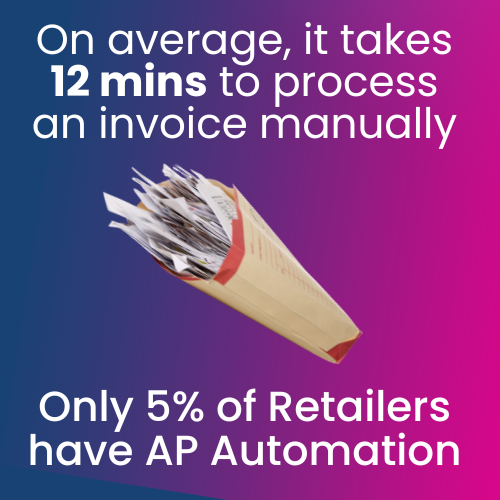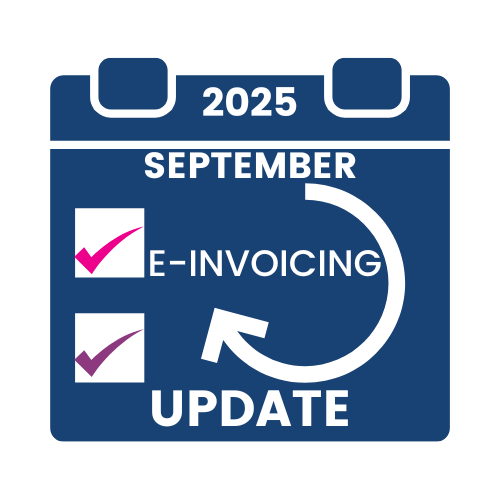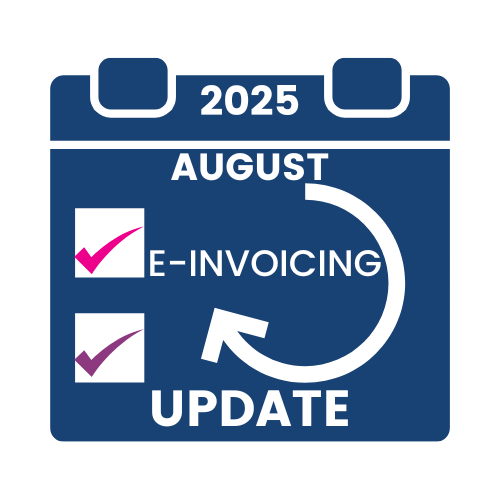According to an article in Retail Times, retailers were looking at the tough reality of their ‘margins of terror’ and had little choice but to increase prices and announce major redundancies ahead of the April 1 deadline.
A few months after the Chancellor’s budget, retailers are continuing to feel the pinch. As an industry that is notorious for operating on wafer thin margins, the increase in National Insurance Contributions and National Living Wage has pushed the profit margins to the limit. Add to that, according to the British Retail Consortium research, 70% of respondents to a survey of CFOs said they were pessimistic or very pessimistic about trading conditions over the coming 12 months.
Retail businesses by nature process high volumes of invoices. SpecSavers, for example, process over 90,000 invoices a month. Manual workflows, such as paper-based invoice handling and manual data entry are still prevalent in retail: AP clerks, on average, manually process 5 invoices per hour (12 mins an invoice). Work out the stats on this, without automation, a retail company like SpecSavers, processing this number of invoices could need an AP team of over 100 people – that’s a BIG wage bill.
Retailers are also reported to spend 10% higher than average amount of hours responding to supplier queries. According to a report from Mineral tree this takes up between 11-20 hours a month, and that is just responding, not finding the solution!
Fraud and compliance risk are increased with manual processes. Human error is inevitable with manual processes. This can lead to duplicate payments, incorrect invoices, fraudulent invoices and compliance breaches. Add to this the time spent manually finding and rectifying these errors can damage supplier and customer relationships.
These kind of challenges for retailers have a financial impact on the business such as;
- Late payments incurring fines
- Duplicate or incorrect payments
- Fraudulent payments
- Poor cash forecasting
- Damaged supplier relationships
With the added pressure of the unique challenges retailers face what can be done to help grow the profitability of the business?
The easy answer is process automation. But if it was that easy, then why have only 5% of retailers implemented it? There has been a clear shift towards adopting automation, for instance manual invoice inputting has dropped from 85% in 2023 to 60% in 2024, but AI adoption is still an emerging technology within the industry still only at 7 %.
But the silver bullet doesn’t always deliver. Implementation is often hindered by legacy systems, poor integration and resistance to change from the team. Typical industry challenges are centred around data inconsistencies, diverse invoice formats and a general lack of standardisation. Integration issues with legacy systems and ERPs / finance systems are a big problem and adapting heavily configured ERPs to work with a standard automation pushes the budget and resources further.
Despite over 50% of retailers planning to automate their AP processes in the next 12 months, many are finding that budget constraints are placing a hold on digital transformation plans. Nearly 30% have said that their automation projects have gone on hold due to lack of buy in form the budget holding stakeholders.
What is the answer? There is not a “One solution fits all” answer to these challenges. However, working through a simple checklist of processes that are time and resource heavy, and putting them in order, can help build a plan to break down the barriers.
For instance, if data capture is taking up team resource and the cost implications are significant, then this area is an easy one to solve. Automate data capture as part of an agile implementation. This will free up the team to deal with the processing of the invoices for payment more quickly. The automated invoice and data capture will verify invoices on receipt, rejecting any that are non-compliant. The team can be assured that the data that they get from the capture is accurate, matches the master vendor data and has the information necessary for the invoice to be processed. Full integration with the ERP/Finance system means that the data can be posted within minutes of the arrival for the AP team to match, code and send for approval. This automation will have an immediate effect on the team, and on the profit margin of the business. No duplicate payments, no late charges and potentially some early payment discounts. The team can work on other value-added tasks too, further increasing the savings and building profit margins. But the automation shouldn’t stop at this quick win. Once the biggest challenge has been ticked off the list, move to the next. The team should have more time to work on the implementation and the preparation for what is required, now they are free from manual data input.
The answer is not just automation – it is automation from a solution provider that can work with the retailer to implement an agile solution that grows and scales at the business’s pace.
Documation’s Agile invoice Processing solution does just this. It has all the features and functionality available in the full Purchase to Pay solution, but with just the data capture. Verification, integration and posting elements active. As and when the business is ready for the next stage of process automation, Documation’s expert team are ready to help the AP decide how and when to implement it. Get in touch to find out more about our AiP solution and how it can help you.





